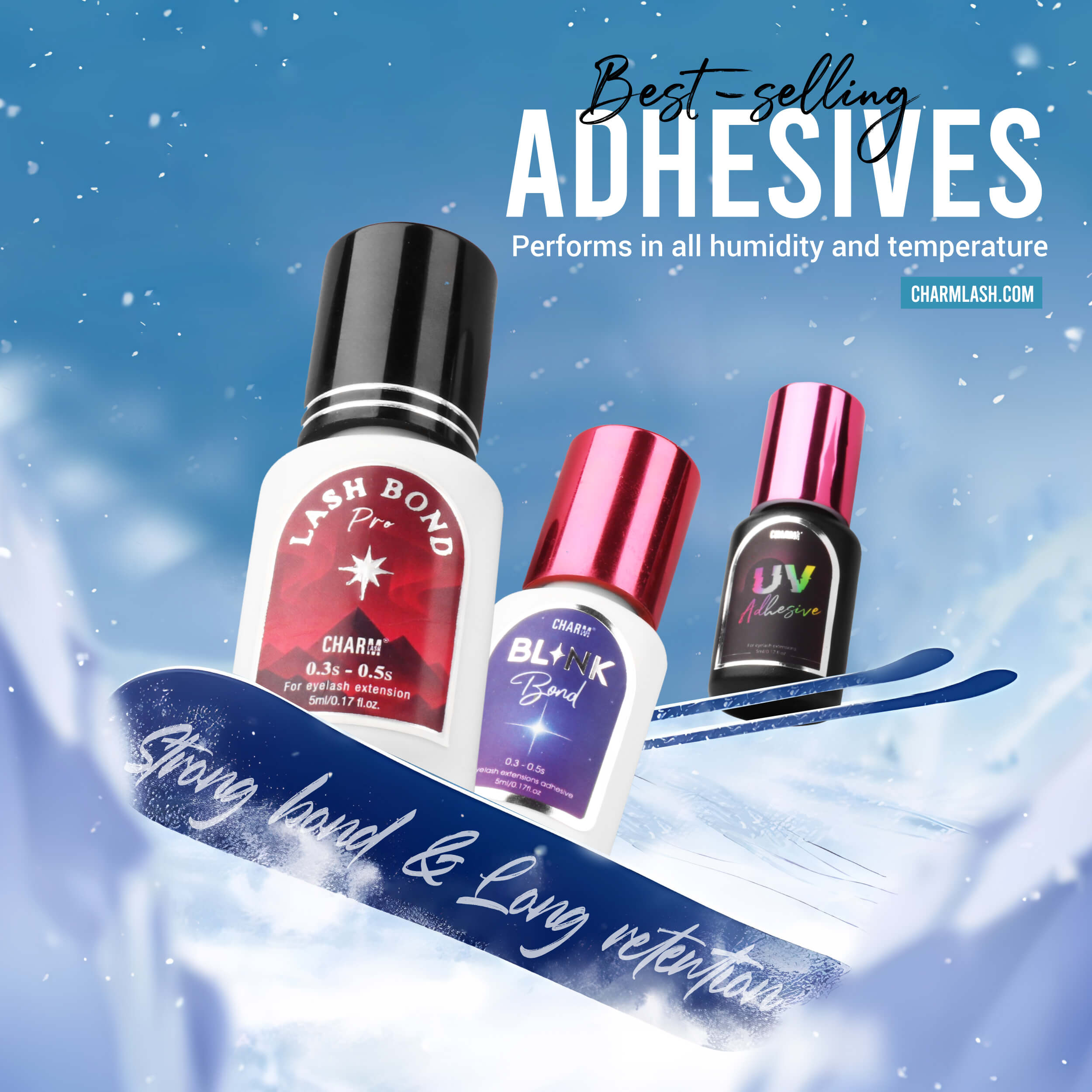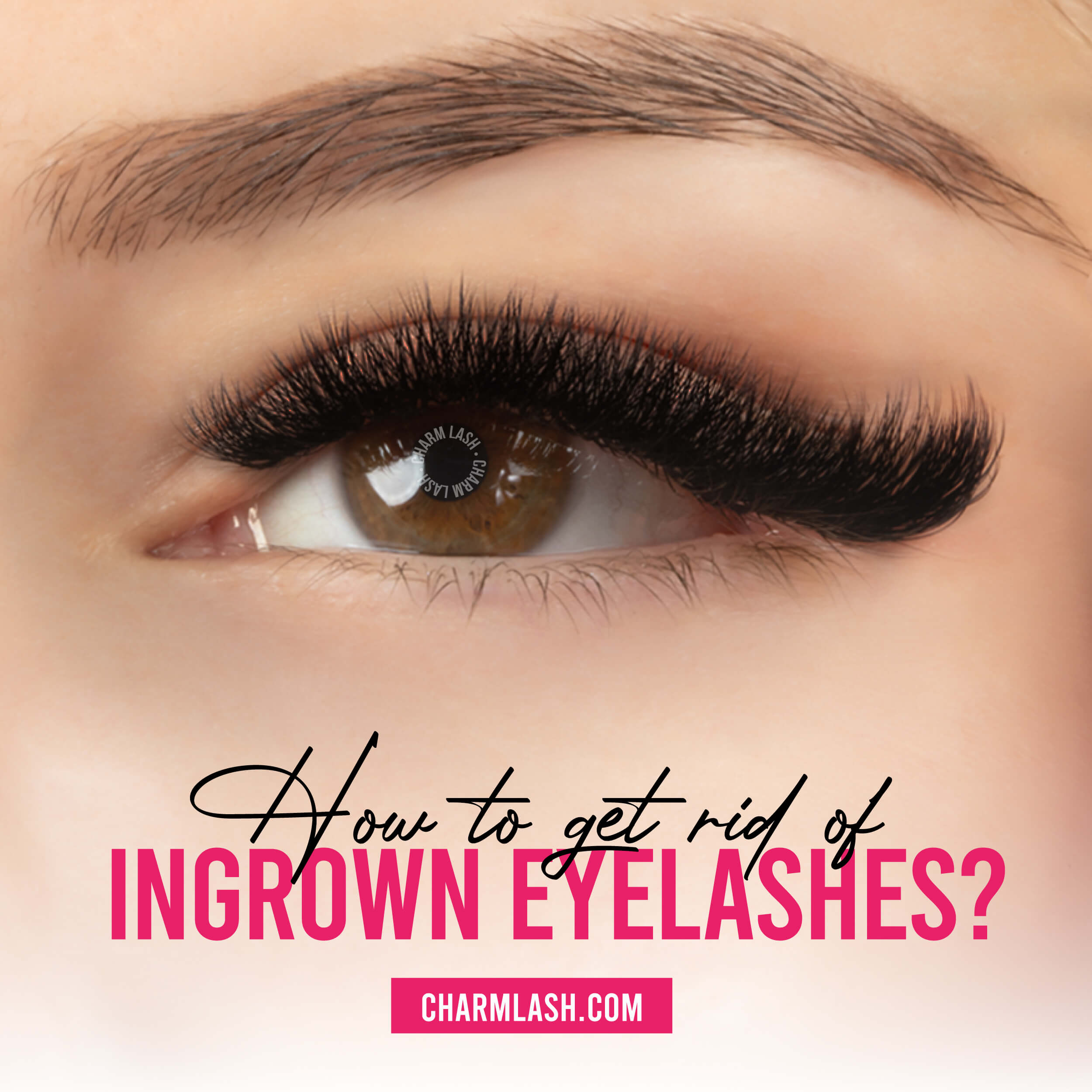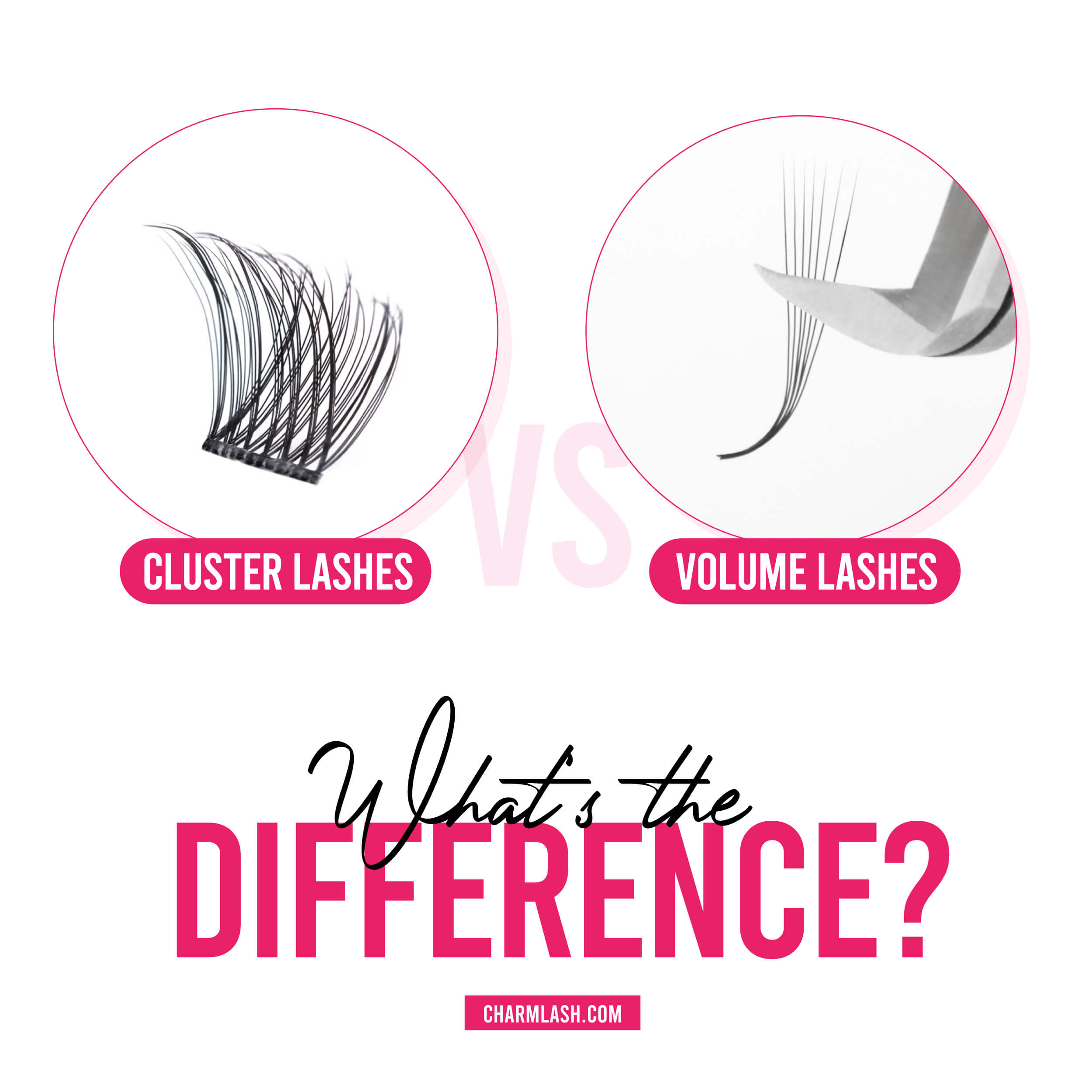Eyelash extensions can be a game-changer, giving you voluminous, full lashes that look gorgeous every day. However, when done incorrectly, they can lead to serious issues, from discomfort to damage to your natural lashes. In this post, we’ll explore the 10 most common reasons that lead to bad lash extensions and how you can prevent them!
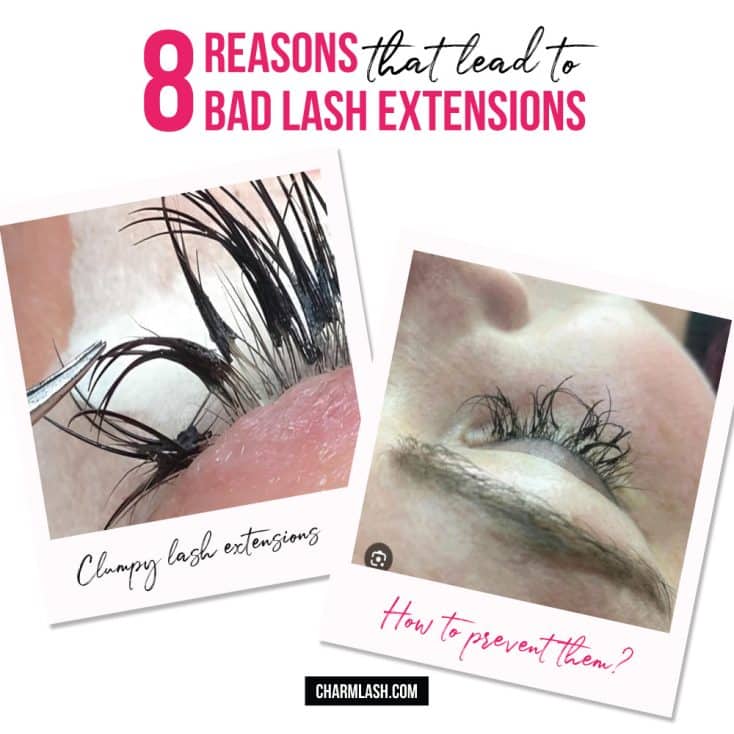
What are bad lash extensions?
Before we dive into the reasons behind bad lash extensions, let’s first define what “bad” lash extensions are. Bad lash extensions are those that cause discomfort, irritation, or damage to your natural lashes. They might look unnatural, fall off too soon, or, in the worst cases, even lead to long-term damage. Poor application, low-quality materials, and improper aftercare are often the culprits.
Some signs of bad lash extensions:
- Uneven or unbalanced lashes
- Clumping or stuck-together lashes
- Too heavy for natural lashes
- Stinging, itching, or irritation around the lash line or discomfort
- Lashes fall out too quickly
- Gaps or sparse spots
- Excessive glue
- Extensions too close to the lash line
- Extensions pointing in different directions:
Now, let’s go to the most common reasons that lead to bad lash extensions and how you can prevent them!
1. Poor lash extension application
What’s the problem?
The application process of eyelash extensions is an intricate and precise art. If you’re inexperienced or doesn’t follow the right steps, it can lead to various issues. Poorly applied lash extensions may stick to the skin instead of the natural lash, causing discomfort and irritation. If the lashes are applied too close to the lash line, you might also experience eye infections or allergic reactions due to the glue or debris trapped near the lash line.
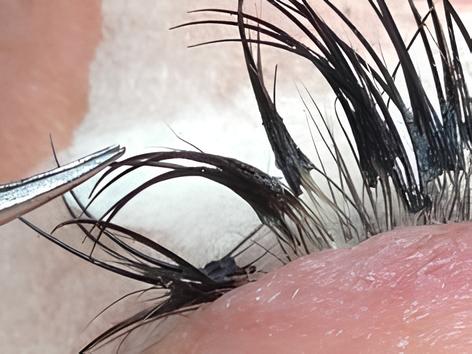
How to prevent it:
Use precision tweezers to isolate each natural lash, ensuring no neighboring lashes stick together. Always maintain a 0.5–1 mm distance from the skin to prevent irritation while still achieving a secure bond. Work in a clean and sanitized environment, keeping all tools disinfected to ensure client safety.
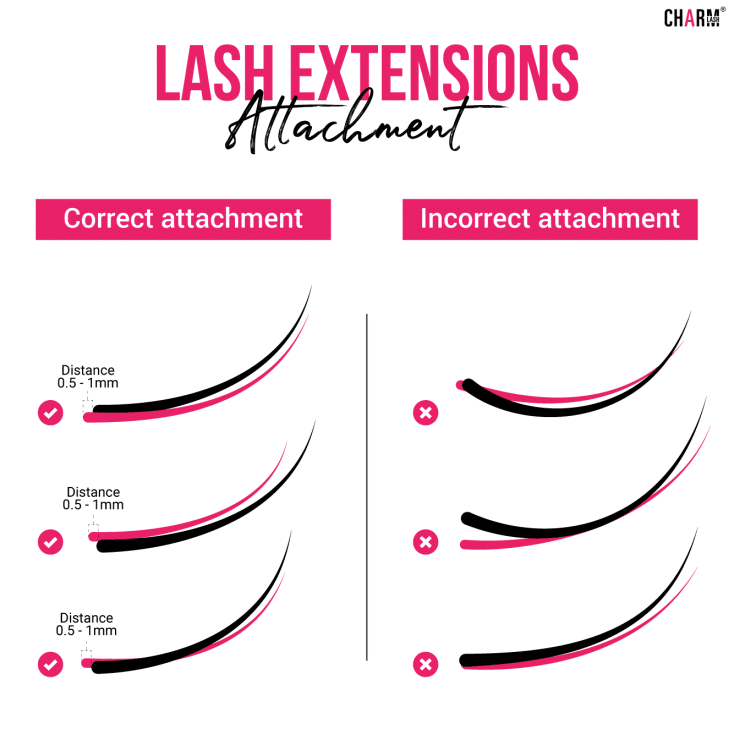
2. Using low-quality lash extensions
What’s the problem?
Not all lash extensions are created equal. Low-quality extensions can make your lashes look unnatural, or worse, cause irritation. Cheap synthetic lashes can appear too shiny, stiff, and unnatural. Additionally, these lashes may not bond well with the glue, which can lead to them falling out prematurely. Over time, poor-quality lashes can also damage your natural lashes.
How to prevent it:
The secret to stunning lash extensions lies in choosing premium materials. Opt for lashes that are soft, lightweight, and comfortable to ensure they won’t harm natural lashes or cause eye irritation. High-quality materials not only enhance the look and feel of the extensions but also contribute to better retention and client satisfaction.
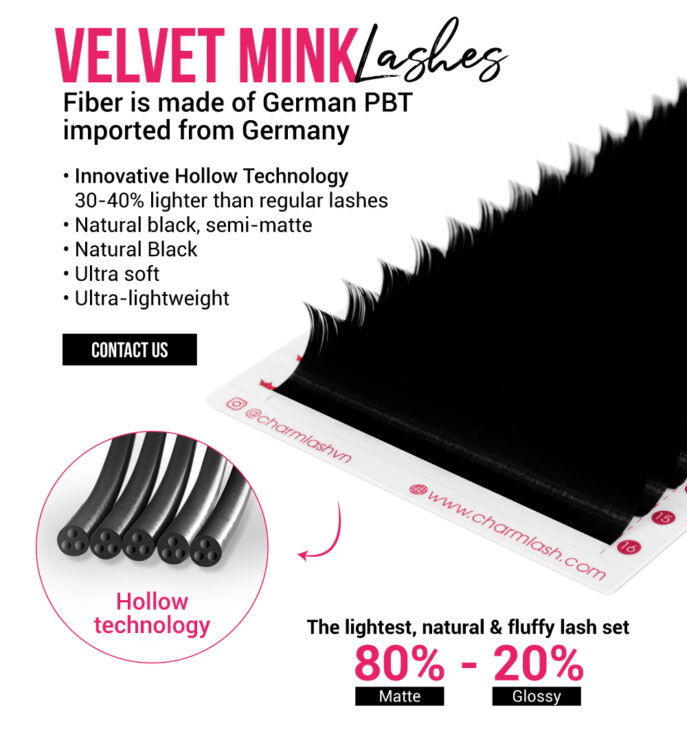
We recommend using our Velvet Mink lashes, made of PBT fiber imported directly from Germany. These lashes feature Hollow technology for 30-40% lighter than regular lashes, which is ultra-soft, ultra-lightweight and very natural when applied to clients’ eyes.
3. Incorrect lash extension length and thickness
What’s the problem?
Choosing the wrong lash length and thickness is one of the most common mistakes that can lead to bad lash extensions. Lashes that are too long for your natural lashes can cause them to bend or weaken, while overly thick extensions can make the lashes look clumpy and unnatural.
In addition, overly heavy lash extensions can place unnecessary strain on the natural lashes, leading to breakage or early shedding. If your client’s natural lashes are too weak to support the weight of heavy extensions, it can result in long-term damage.
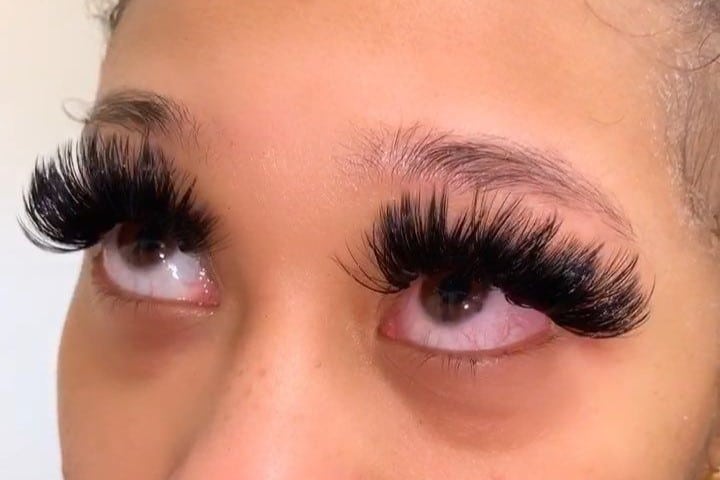
How to prevent it:
Work closely to determine the best length and thickness for your clients. You should assess the strength and health of your natural lashes before applying extensions:
- For classic lashes, the ideal thickness is usually between 0.10mm and 0.12mm.
- For 2D-3D volume sets, lash extension thicknesses of 0.05mm and 0.07mm are typically recommended.
- For volume sets greater than 3D, up to 5D, thinner diameters like 0.03mm or 0.05mm are best suited.
Choose lashes that complement clients’ natural lash growth and ensure that lash extensions don’t cause unnecessary strain. Generally, the lash extension length should be no more 3mm longer than the clients’ natural lashes.
4. Using the wrong lash glue
What’s the problem?
The adhesive used in lash extensions is just as important as the lashes themselves. Poor-quality glue can cause a range of issues, from allergic reactions (redness, swelling, itching, etc.) to early lash loss, leading to bad lash extensions.
On top of that, using the wrong glue can result in poor retention, meaning the lashes might start falling off too soon. This leads to a messy, uneven lash line, and no one wants that! If the glue isn’t strong enough, it might also cause the extensions to clump together, which can feel uncomfortable for your client. So, choosing the right, high-quality lash glue is essential. It helps ensure your clients have a beautiful, long-lasting lash look that stays in place and feels great too!
How to prevent it:
To prevent issues with lash glue, always invest in high-quality adhesives that are specifically designed for eyelash extensions. Make sure to choose a glue that’s formulated for your specific environment, whether it’s high or low humidity, to ensure a strong bond. It’s also essential to select an adhesive that’s safe and gentle for your clients’ eyes. Before applying the glue, do a patch test to ensure your clients don’t have any allergic reactions.
5. Not properly isolating lashes
What’s the problem?
Proper isolation is one of the most critical steps in the lash extension process. When lash extensions are applied without isolating individual natural lashes, multiple lashes may become glued together, resulting in clumpy bad lash extensions. If multiple lashes are stuck together, it can cause your natural lashes to become damaged or break off.
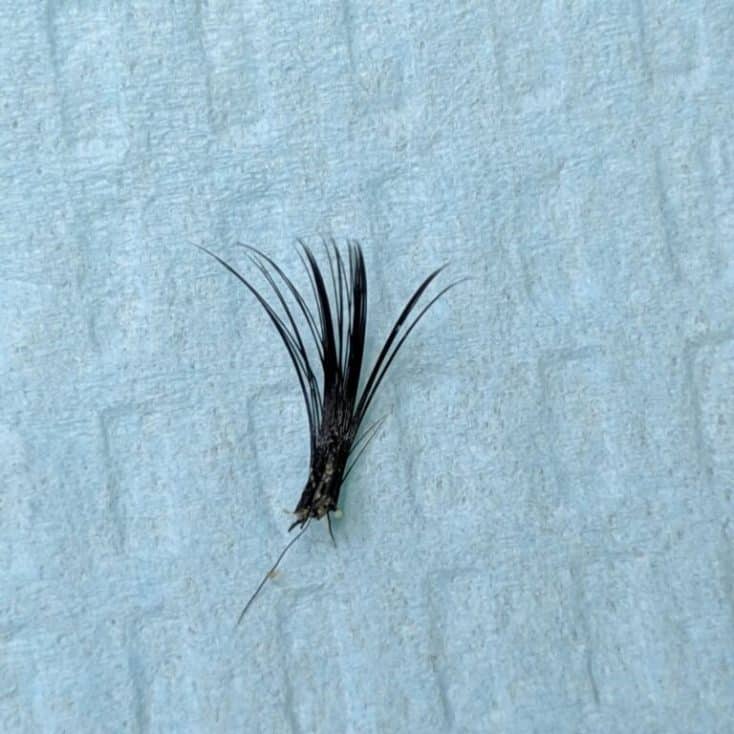
How to prevent it:
Isolation is a key skill every professional lash artist should master. Proper isolation involves separating each natural lash before applying the extension, ensuring that the extension bonds only to one individual lash. This helps prevent the extensions from clumping together, allows for a fuller look, and ensures the extensions stay intact longer. We recommend using a straight tip tweezers for separating lashes – they offer great precision and are often used by many pros.
For a detailed guide on how to isolate lashes properly, check our full guide here.
6. Too much glue or too little glue
What’s the problem?
The amount of glue used can make or break the application of eyelash extensions. If too much glue is applied, it can cause clumping, heavy extensions, and discomfort. On the other hand, too little glue can result in extensions falling off prematurely or not adhering properly.

How to prevent it:
Ensure that you use just the right amount of adhesive. The glue should coat the base of the extension, but not drip or glob onto the natural lash. Many high-quality glues come with applicators that make it easier to apply just the right amount of glue. A good technician will know how much product is needed for the desired results without causing clumping or excess weight.
7. Poor aftercare
What’s the problem?
Even the best application can result in premature lash shedding or damage if the client doesn’t follow proper aftercare instructions. Without proper care, lashes can become tangled, oily, or dirty, leading to irritation or early fall-out.
How to prevent it:
Provide your clients with detailed aftercare instructions. Encourage them to avoid getting their lashes wet for the first 24-48 hours, avoid rubbing their eyes, and refrain from using oil-based products. Suggest lash cleaners that are safe for eyelash extensions and remind them to brush through their lashes daily to prevent tangling.
8. Bad retention
What’s the problem?
Bad retention happens when lash extensions fall out too quickly or don’t stick properly to the natural lashes. This can occur due to poor lash preparation, low-quality adhesive, or environmental factors like improper humidity. Clients may also contribute to the issue by not following aftercare instructions, such as avoiding oil-based products or keeping lashes clean.
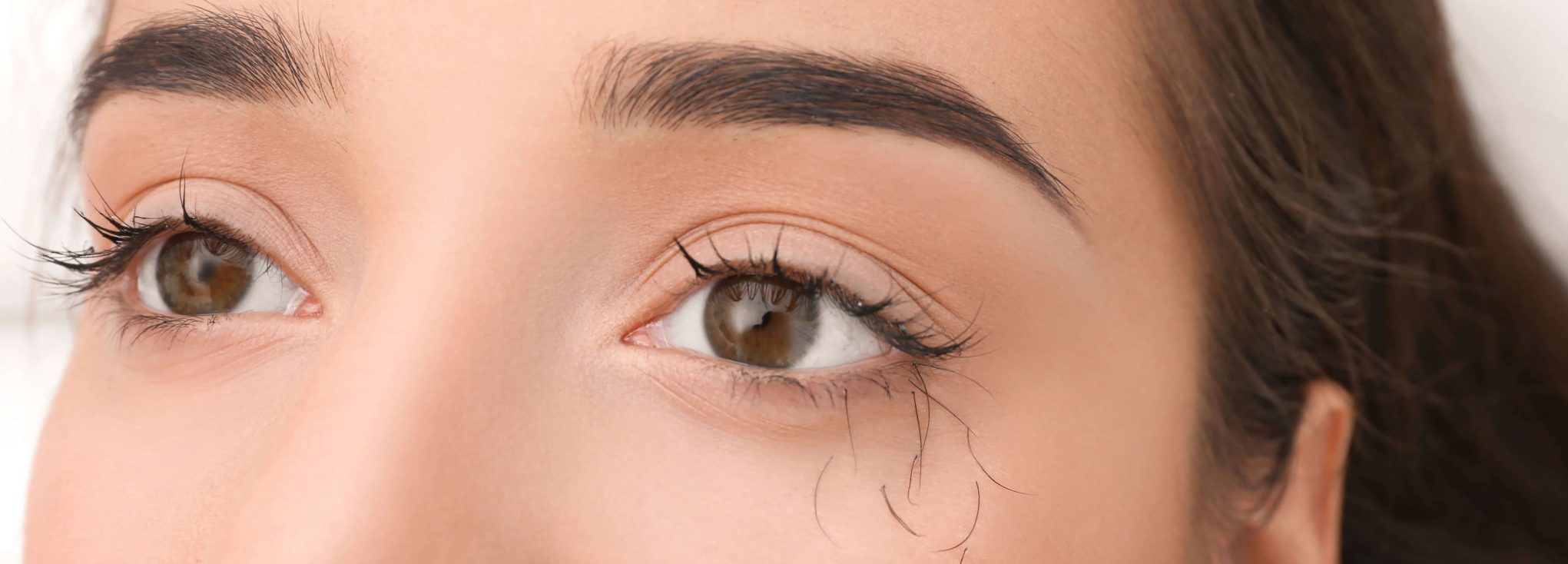
How to prevent it:
To ensure excellent retention, always start with a clean base by using a high-quality lash primer to remove any oils or dirt. During application, use a premium adhesive suited to the humidity and temperature of your workspace.
After finishing the set, apply a super bonder to cure the adhesive instantly and strengthen the bond between the extensions and natural lashes. Super bonder also reduces fumes, making the experience more pleasant for clients. Educating clients on proper aftercare can further maximize lash retention.
How to fix bad lash extensions?
When faced with bad lash extensions, the safest and most effective solution is having lash extensions removed. This step ensures no damage is done to the natural lashes and provides a fresh base to work with for a flawless reapplication. We recommend using our professional Strawberry lash remover. Advise your clients to never force or tug on the extensions, as this could cause discomfort or even break natural lashes.
Once the extensions are removed, it’s important to thoroughly cleanse the natural lash line to eliminate any leftover adhesive, oils, and debris. Using an gentle lash foam cleanser to make sure the lashes are clean and ready for reapplication. This also helps reduce any potential irritation when applying new extensions.
Next, assess the condition of the client’s natural lashes. Check for any damage or irritation caused by the previous set of extensions. If you notice that the lashes are weak or have been damaged, it’s a good idea to give them some time to recover before applying a new set. Healthy natural lashes are crucial for a successful and long-lasting lash extension application.
Why you should choose Charmlash?
If you’re looking for premium lash materials, consider using CharmLash’s wide range of high-quality extensions and adhesives. All of our lash products are made from high-quality PBT fiber, imported from Korea, Japan, and Germany. These products are cruelty-free, with no animal testing, and are designed to be gentle on your clients’ eyes, preventing allergic reactions. We ensure the highest safety and quality standards by obtaining certifications from reputable organizations such as MSDS, CoA, and FDA.
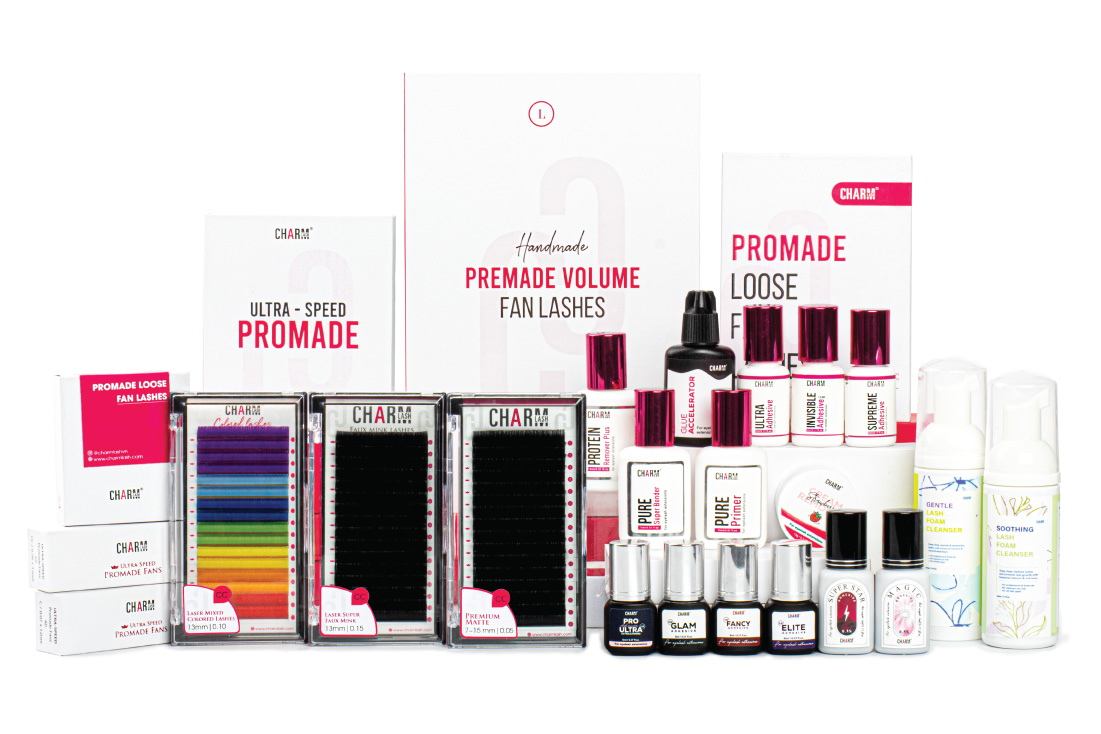
Final thought
Bad lash extensions don’t just happen—they occur when proper care, techniques, and high-quality products are overlooked. As a lash artist, salon, or spa professional, you have the power to ensure your clients walk away with stunning, safe, and long-lasting lash sets every time. By investing in premium materials, mastering precise application techniques, and always prioritizing client comfort, you can prevent bad lash extensions from happening in the first place.
Remember, the key to happy clients and a thriving business is a commitment to excellence in every lash application. Bad lash extensions only happen when you let them—so don’t!
Follow us on Instagram for more helpful lash tips!
MAYBE YOU WANT TO KNOW MORE:














